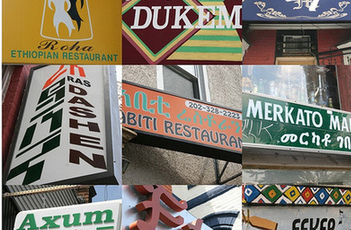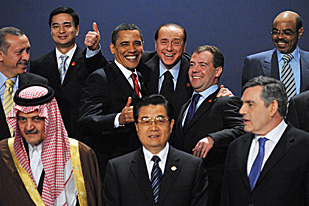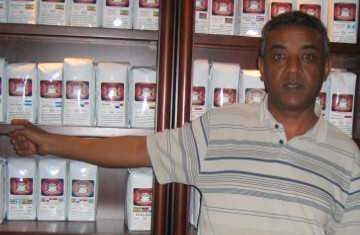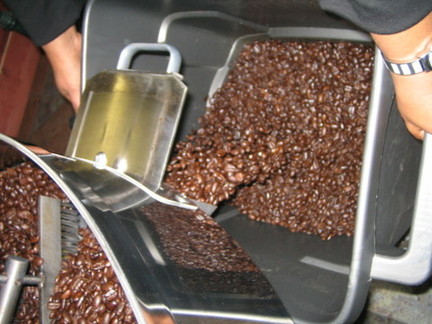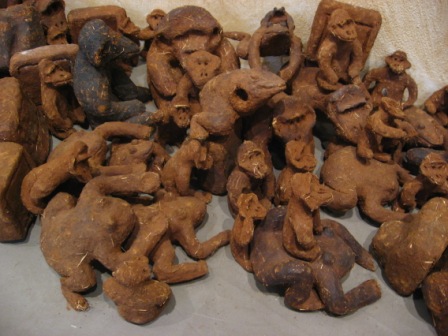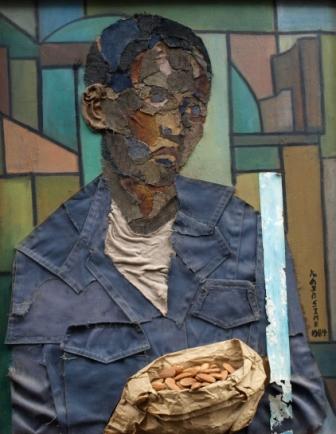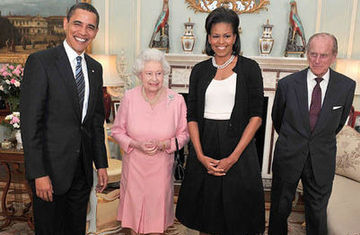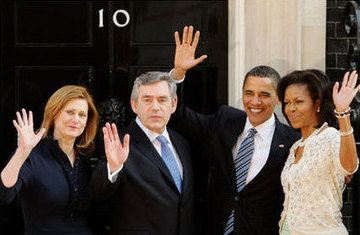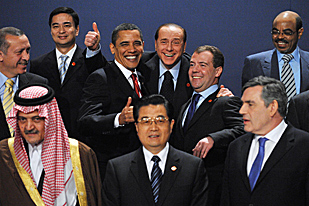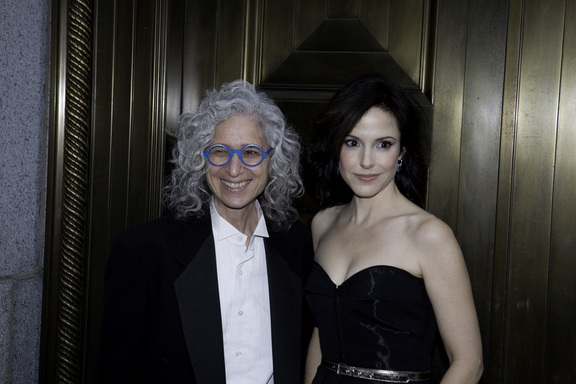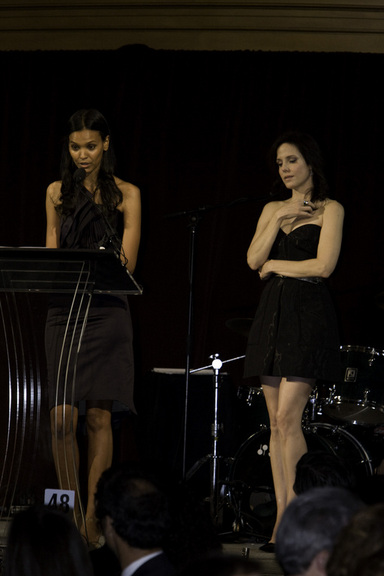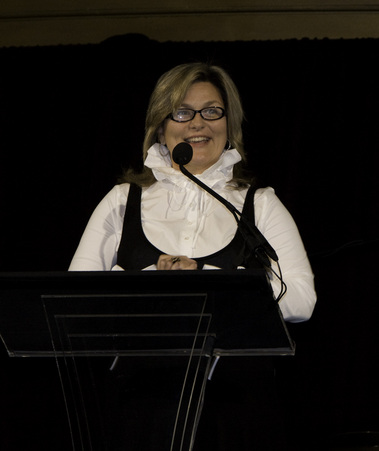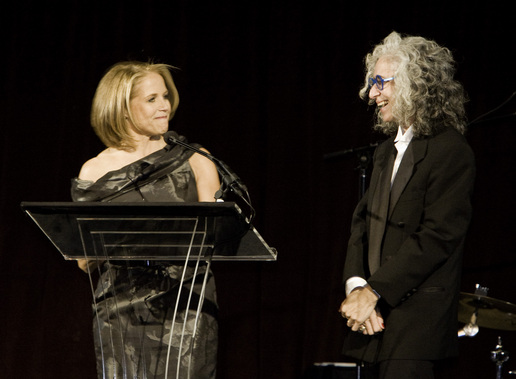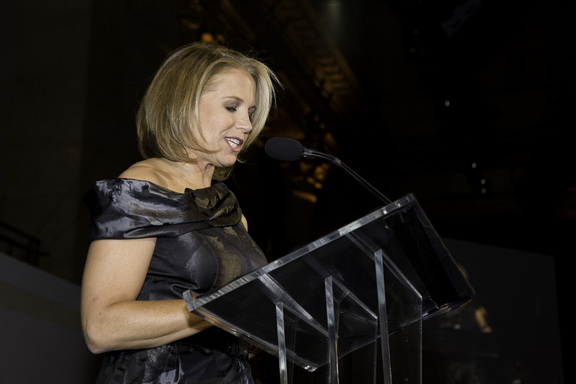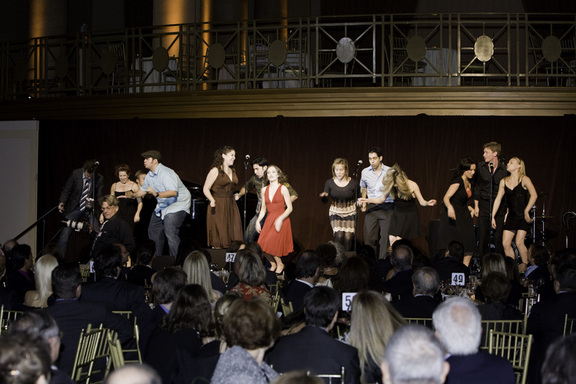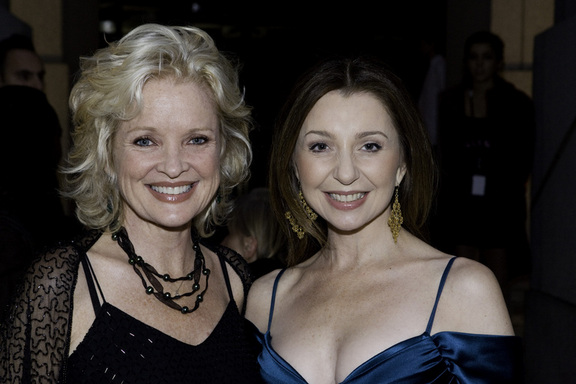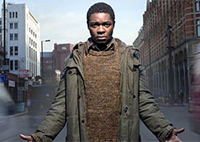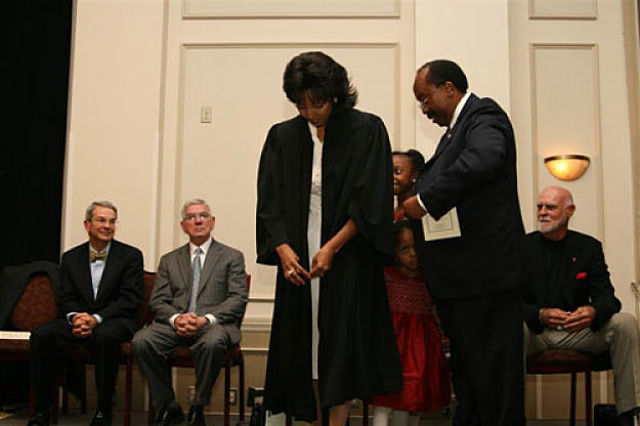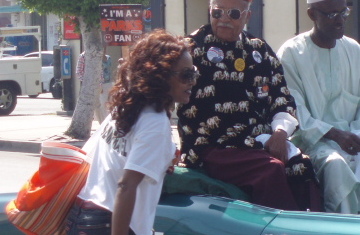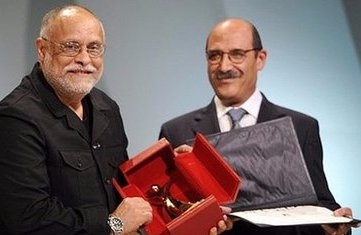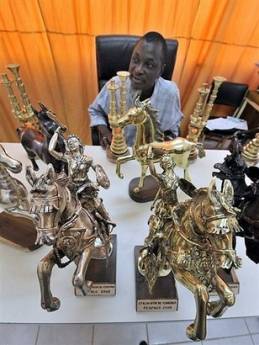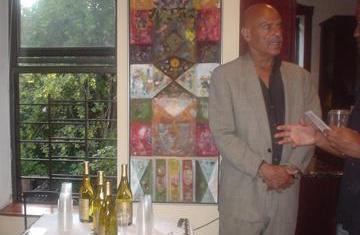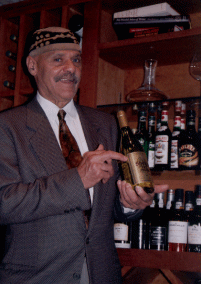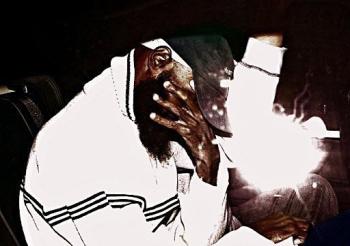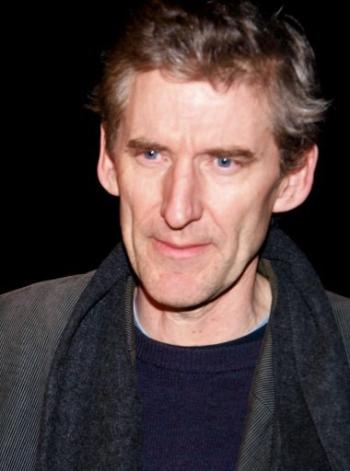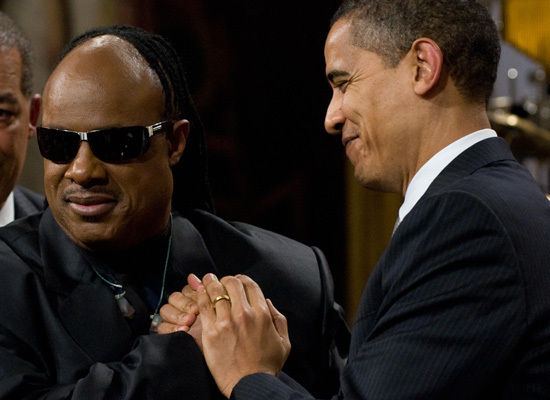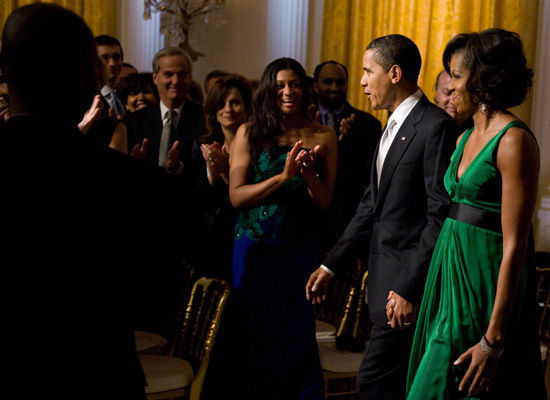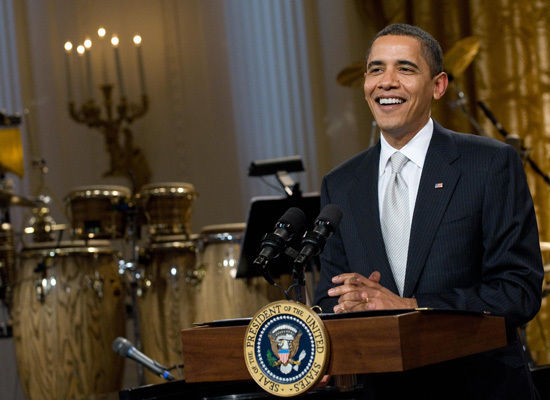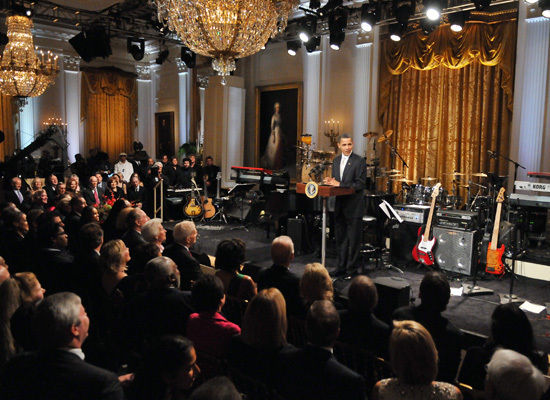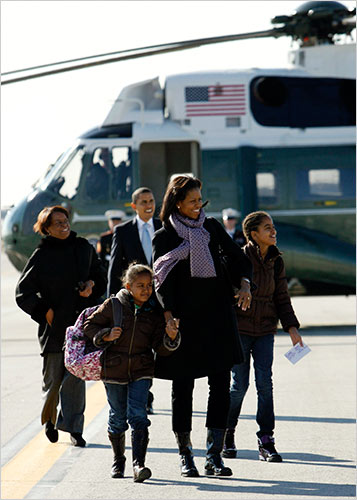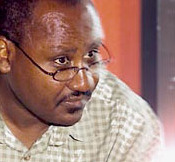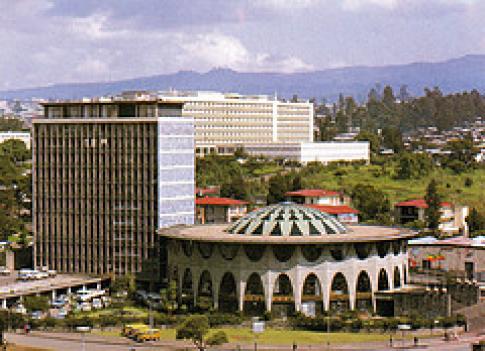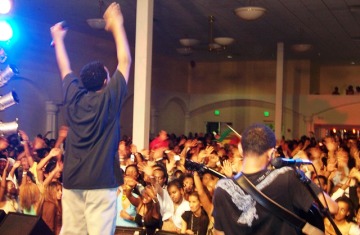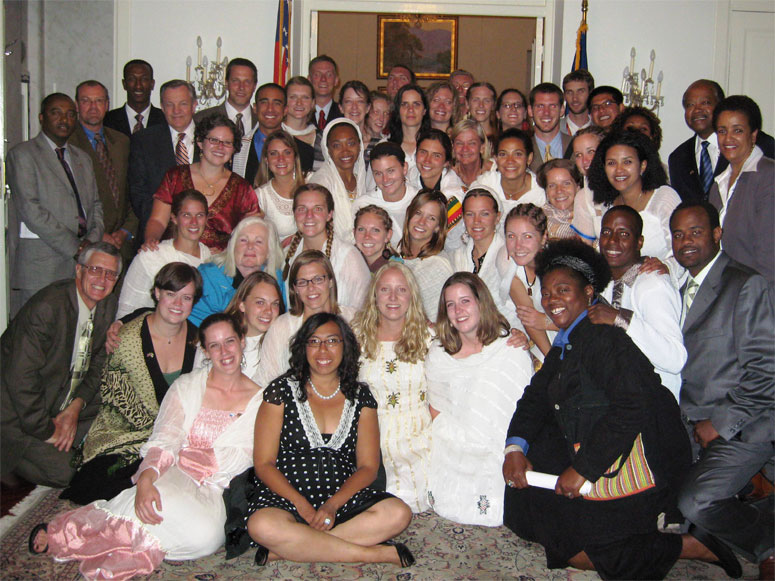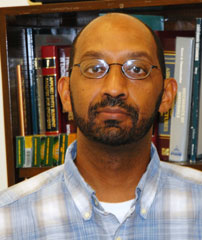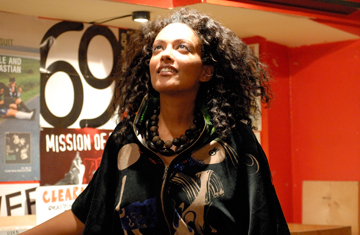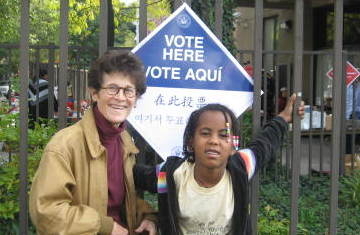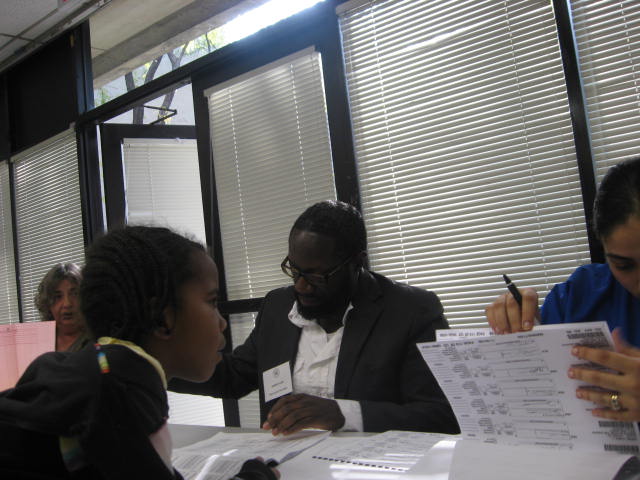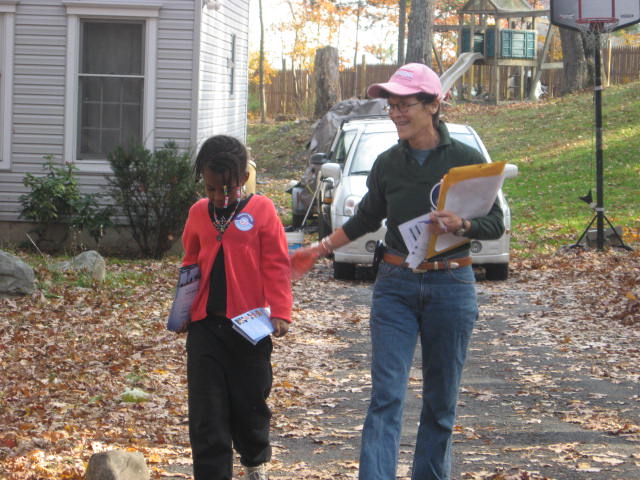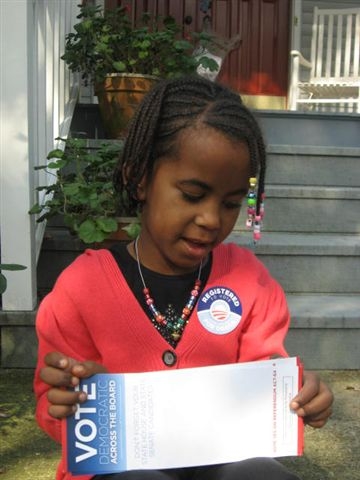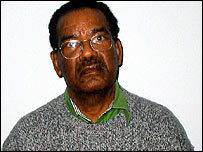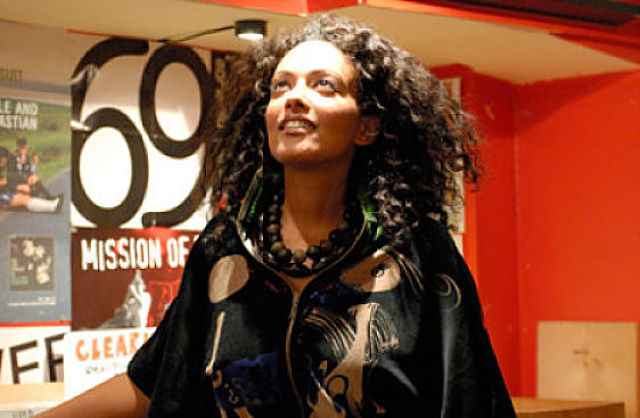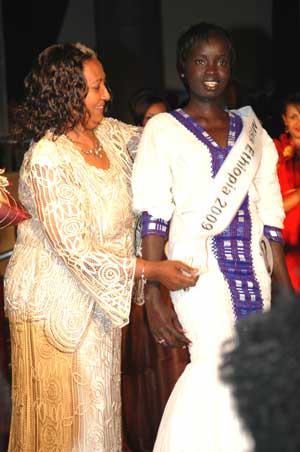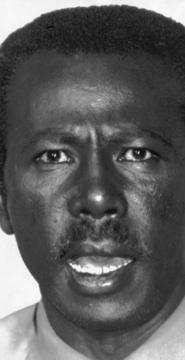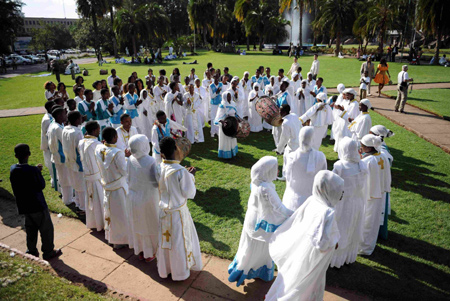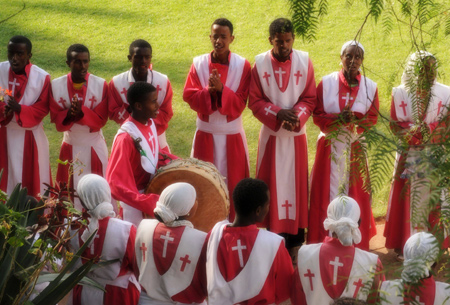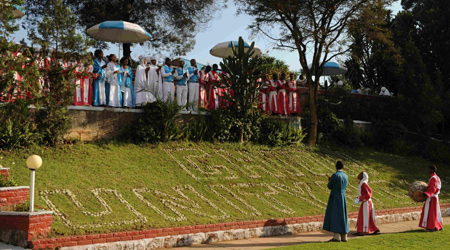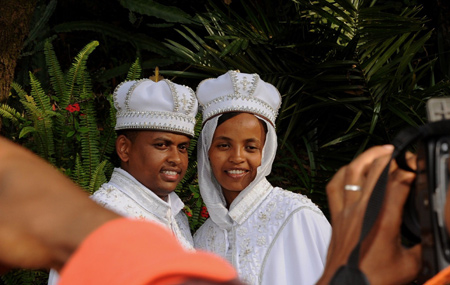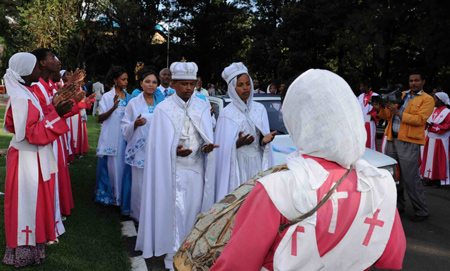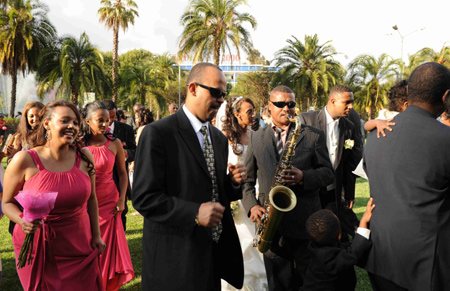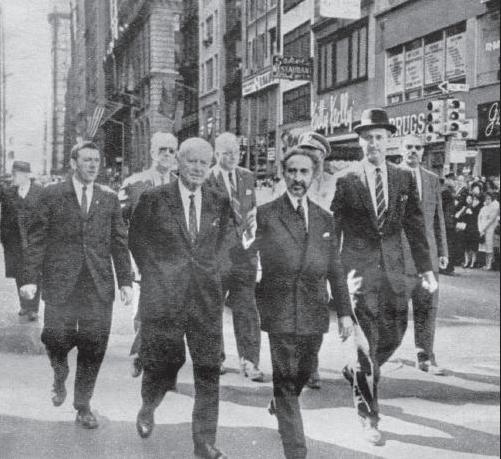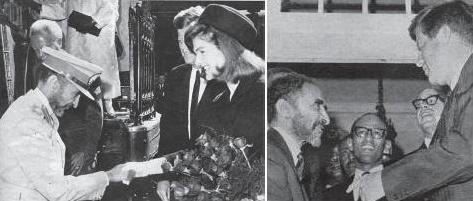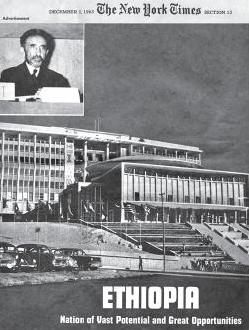Tadias Magazine
By Ayele Bekerie

Published: Monday, February 23, 2009
New York (TADIAS) – William Leo Hansberry (1894-1965) was the first academician to introduce a course on African history in a university setting in the United States in 1922. He taught a History of Africa, both ancient and contemporary, for 42 years at Howard University. He gave lectures on African history both in the classrooms and in public squares here at home and in Africa. Thousands of students and ordinary people took his history lessons and some followed his footsteps to study and write extensively about historical issues. Among the seminal contribution of Hansberry is the academic reconstruction and teaching of Ancient African History. His proposal to develop an Africana Studies as an interdisciplinary field not only visualized the centrality of African History, but also laid down the groundwork for eventual establishment of Africana Studies institutions in the United States and Africa.
Hansberry, who studied at Harvard, Oxford and University of Chicago, was an exemplary scholar-activist. He firmly and persistently engaged in disseminating historical knowledge on Africa beyond the classroom. Even though he was not able to complete his PhD dissertation, he evidently demonstrated a remarkable research and writing skills. It is time for Howard University to recognize the immense contributions of Hansberry by organizing a major conference and by naming the Department of African Studies, William Leo Hansberry Department of African Studies. He served as a research associate to the great African American scholar, W.E.B. DuBois. Among his former students were Chancellor Williams (The Destruction of Black Civilization (1987) , and John Henrik Clarke (the author of several books, author of the blueprint for Africana Studies at Cornell University, the distinguished professor of African History at Hunter College, a leading theorist and the founder of the African Heritage Studies Association).
This great man of antiquity, founder of the Ethiopian Research Council, the forerunner of Ethiopian Studies, and genuine friends of African students, died without getting his due recognition from Howard or elsewhere. In fact, it was close to his time of death that he got a few recognitions in his country. His great accomplishments were duly recognized in Africa, particularly in Ethiopia and Nigeria. To this date, no building or sections of building has been named after him at Howard. This is in contrast to former prominent professors of Howard, such as Alain Locke.
Conceptualizing, writing and teaching what Leo Hansberry calls pre-European History of Africa and Africana Studies at a time of open denial and advancement of notion of African inferiority will always remain as his great legacy. In fact, I like to argue that William Leo Hansberry might have been the person who coined the word Africana. One of the most comprehensive outlines he prepared is entitled “Africana and Africa’s Past” and published by John Doe and Company of New York in 1960.
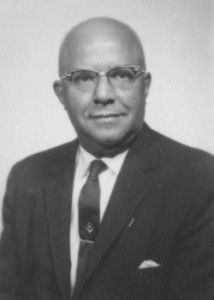
(Photo of William Leo Hansberry)
The term eventually became a useful conceptual word for interdisciplinary approaches and methodologies in the field of Africana Studies, that is, the study of the peoples and experiences of Africa, African America, the Caribbean as well as the Black Atlantic by gathering and interpreting data obtained from a range of disciplines, such as History, Political Science, Archaeology, Anthropology, Psychology, Sociology, Economics, Literature and Biology. My department is named Africana Studies and Research Center at Cornell University with interdisciplinary focus on Africa, African America and the Caribbean. Until very recently, Africana Center was the only center that has used the term Africana. Now institutions like Harvard and others have adopted the conceptual word. The purpose of this paper is to revisit the approaches and writings of William Leo Hansberry on History of Africa as well as Africana Studies in light of the findings of the last forty years.
Claims made by Leo Hansberry, such as the African origin of human beings, the migrations of human beings out of Africa to populate the world, the link between the peoples and civilizations of Egypt, Nubia and Alpine Ethiopia, the civilizations of Western Sudan in medieval times, are no longer in dispute. Several archaeological and archival findings have confirmed his claims. Lucy or Dinqnesh, the 3.1 million years old human-like species, currently touring the major cities of the United States, is major evidence affirming Africa’s place as a cradle of human beings.
The intervention of enslavement and massive economic activities associated with it suppressed, distorted or destroyed much of the facts and histories of Africa. Hansberry and his associates argued tirelessly and fearlessly, in spite of academic ostracism and harassment, to research, construct and teach African history. The publication of UNESCO History of Africa in 8 volumes and the establishment of Departments of History and Africana Studies in the United States, Europe and Africa, particularly in the 1960s, are clear evidence of the correctness and rightness of Hansberry’s approach to history. Hansberry’s diligent and determined search for Africana Antiqua is rooted in his now famous proposition: “It was, in the main, the ruin which followed in the wake of Arab and Berber slave trade in the late Middle Ages and the havoc was wrought by the European slave trade in more recent times that brought about the decline and fall of civilization in most of these early African states.”
He then framed his argument for persuasion in the following manner: “On the strength of the now available information about ancient and medieval Africa, together with the published reports relating to the continent in Stone Age times, it is now certain that Africa has been, throughout the ages, the seat of a great succession of cultures and civilizations which were comparable in most respects and superior in some aspects to the cultures and civilizations in other parts of the world during the same period.” In fact, it is time for Oxford, Harvard and University of Chicago to posthumously award him an honorary doctorate degree.
Leo Hansberry did graduate work at Oxford, Harvard and Chicago Universities and yet none of them were prepared to award him with a PhD degree. His intellectual strategy to dismantle the lingering impact of enslavement by researching and teaching about ancient African civilizations was challenged aggressively, both from within and from without throughout his academic career at Howard University. He taught for over forty years at Howard University in the history department. Thousands of students took his African history courses, and yet his title did not go beyond an instructor.
In the absence of promotion and grants, he persisted in teaching and researching Africa in antiquity. He was denied a grant from the Rosenwald Fund and his Rockefeller grant was terminated while he was studying at Oxford University. He did manage to get a Fulbright scholarship that allowed him to visit sites of antiquities in Africa. Throughout his ordeals, his source of great strength was his wife, Myrtle Kalso Hansberry, who not only supported him, but she also collaborated in his research by serving as “his research assistant, translator, grammarian, and counselor.” In addition, she taught for many years in the Public School System of the District of Columbia. At present, his two daughters are the custodians of his writings and manuscripts. It is my hope that they will be able to find an appropriate institution to house his works.
Leo Hansberry was born in 1894 in Mississippi. His father taught history at Alcorn College, a historically Black Institution of Higher Learning. No information is provided on his mother. His early years (1894-1916) coincided with era of Jim Crow, Negrophobia, and constitutional disenfranchisement of the vast majority of African Americans. He was also exposed at the same time to a tradition of resistance and Black Nationalism. Leo Hansberry, however, came from a family with rich intellectual tradition, including his niece, Loraine Hansberry, the great playwright and author of a Broadway play A Raising in the Sun. His parents, both educators, nurtured him with self-pride and self-worth so as to instill in him a desire to pursue a pioneering academic field with a persistent focus on Africana Studies and history of Africa, particularly ancient Africa.
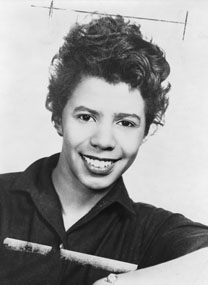
(Photo of Playwright and author Loraine Hansberry, Leo Hansberry’s niece)
Leo Hansberry inherited his father’s library, for his father died while he was young. Home schooling (long before it became a common practice in the United States) might have been the reason behind his confidence and determination to pursue “Africana Antiqua” in his own terms. His father’s library served him as a source what John Henrik Clarke, his former student, calls ‘more and more information’ on Africa. According to Kwame Wes Alford, a major breakthrough in his search for Africa took place after he read W.E.B.DuBois’s book The Negro (1915). The book provided him with ‘more information’ on African long history, cultures and civilizations. The book freed him from a state of psychological bondage. Later in his academic career, he became an important source of information on African history to W.E.B. Dubois.
Leo Hansberry studied at Harvard University from 1916 to 1920. It was during this period that he read all the books suggested by DuBois’s reading list. He got his masters at Harvard, but left Harvard before earning a PhD degree.
By 1920, Hansberry recognized the conceptual importance of interdisciplinarity, the cross-discipline approach to a field of study, and, in fact, became the first African American scholar to establish African Studies in the United States. In 1922, he actually became the first scholar to develop and teach courses in African history at Howard University. African history was not offered in any of the American universities at that time.
Hansberry had meaningful relationships with WEB DuBois, Marcus Mosiah Garvey, the founder of the United Negro Improvement Association, James Weldon Johnson, the author of ‘Lift Every Voice and Sing,’ Carter G. Woodson, the author of The Miseducation of the Negro and Frank Snowden, the author of Blacks in Antiquity.
“Hansberry led the African American and Diaspora contingent in support of Ethiopia as president of the Ethiopian Research Council (ERC) during the Italo-Ethiopian War.” ERC is a forerunner of Ethiopian Studies. His vision of broader conception of the field, however, was not pursued when the field is established in Ethiopia. The field is defined by focusing on not only alpine Ethiopia, but also on the history and cultures of northern Ethiopia. Southern Ethiopia and the histories and cultures of the vast majority of the people of Ethiopia did not get immediate attention. Furthermore, the idea of Ethiopia is a global idea informed by histories and mythologies of ancient Africa. In other words, the idea and practice of Ethiopia should be broadened in order to integrate the multiple dimensions of Ethiopia in time and place.
Leo Hansberry writes with such simplicity and clarity, it is indeed a treat to read his treatises. The renowned Egyptologist W.F. Albright of Johns Hopkins University noted the considerable writing skill of Hansberry. He acknowledged the “vivid style and clearness and cogency” of Hansberry’s writing.
Leo Hansberry counseled and assisted African students for 13 years at Howard University. Among the students who took his class was Nnamide Azikiwe, the first president of Nigeria. He was also a good friend of Kwame Nkrumah, the first prime minister of Ghana. Hansberry was instrumental “in founding the All African Students Union of the Americas in the mid-1950s.” “With William Steen and the late Henrietta Van Noy, he co-founded in 1953 the Institute of African-American Relations, now the African-American Institute” with its headquarter in New York City. According to Smyke, Hansberry was also the “prime mover in the establishment of an Africa House for students in Washington.”
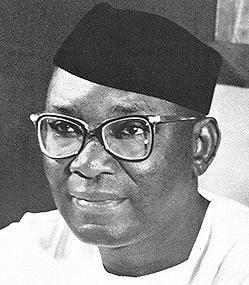
(Photo: Nnamide Azikiwe, the first president of Nigeria, was one of Leo Hansberry’s African students)
In 1960 his former student Dr. Azikiwe, the first elected president of Nigeria, conferred on him the University of Nigeria’s second honorary degree, and at the same time inaugurated the Hansberry School of Africana Studies at the University. In 1964 Hansberry was selected by the Emperor Haile Selassie Trust to receive their first prize for original work in African History, Archaeology, and Anthropology in Addis Ababa, Ethiopia.
In 1963, Hansberry gave a series of lectures in the University of Nigeria at Hansberry College of African Studies, Nsukka Campus. His main topic was “Ancient Kush and Old Ethiopia.” He described it as “a synoptic and pictorial survey of some notable peoples, cultures, kingdom and empires which flourished in the tropical areas of Nilotic Africa in historical antiquity.”
With regard to his sources, he used the English translations of Egyptian, Assyrian, Nubian and Ethiopian manuscript documents and inscriptions. He cited Breasted’s Records of Ancient Egypt; Luckenbill’s Assyrian Records; Budge’s Annals of Nubian Kings; and Budge’s History of Nubia, Ethiopia and Abyssinia. The Classical references are to be found in various modern editions of the authors mentioned. Access to archaeological reports may be found in the great national and larger university libraries. For the introduction to the history of ancient Nubia, A.J. Arkell’s History of the Ancient Sudan may be read with considerable profit.
His subtopics were Cultural and Political Entities (The peoples and cultures of Lower Nubia, 3000 -1600 BCE ; Kerma Kushites of Middle Nubia, 2500 – 1500 BCE; Kushite kingdoms of Napata and Meroe in Lower Middle and Upper Nubia, 1400 BCE – 350 CE; Peoples and cultures of the Land of Punt (Eritrea and the Somalilands), 3000 BCE – 350 CE; The Ethiopian (‘Abyssinian’) kingdom of Sheba (according to the Kebra Nagast), 1400 to 100 BCE; and the Ethiopian Empire of Aksum, 100 BCE to 600 CE. These geographical and historical designations have been conformed by a series of archeological studies in the last fifty years. It is also clear from this important chronology that Ethiopia is a term used by both Nubia and present-day Ethiopia.
In his sub-topic II, he outlined, in greater detail, some notable primary sources of information.
1. Egyptian traditions concerning Punt or Ethiopia as the original homeland of Egypt’s most ancient peoples and their culture.
2. Kushite traditions (as recorded by Diodorus Siculus) to the effect that Egypt was ‘at the beginning of the world’ nothing but a vast swamp and remained such until it was transformed into dry land by alluvium brought down from the land of Kush by the River Nile.
3. Kushite traditions (as recorded by Diodorus Siculus) to the effect that earliest ‘civilized’ inhabitants of Egypt and the basic elements of their civilization were derived from a common ancestral stock.
4. Genesaical traditions (Genesis X) to the effect that the Ancient Kushites and the Ancient Egyptians were derived from a common ancestral stock.
5. Egyptian historical records detailing numerous peaceful commercial missions from Egypt to Kushite countries and the Land of Punt for the purpose of procuring many valuable and useful products which were lacking in Egypt but abundant in ‘the good lands of the south.’
6. Egyptian inscriptions on stone and other types of written records commemorating defensive and offensive efforts of various pharaohs to the safeguard Egypt from military attacks and invasions by Kushites pushing up from the South.
7. Biblical and Rabbinical traditions, and the testimony of Flavius Josephus concerning the relationships of Moses, the great Hebrew lawgiver, with the Ancient Kushites.
8. The surviving annals of Nubian kings on the Kushite conquest of and relationships with, Egypt in the 8th and 7th centuries BCE; notably: –
a. Piankhy’s Conquest Stele
b. The inscriptions of king Taharka
c. The Memphite stele of King Shabaka
d. Tanutamen’s reconquest stele
9. Biblical, Assyrian and Classical (Greek and Roman) historical references and traditions concerning the national and international activities of Kushites kings of the 8th and 7th centuries BCE.
10. Surviving Nubian Annals on the careers of Kushite kings who flourished between the 7th century BCE and the 6th century CE, notably: –
a. Inscriptions of Aspalta – 6th century BCE
b. Stele of Harsiotef – 4th century BCE
c. Stele of Nastasen – 4th century BCE
d. Inscriptions of Netekaman and Amantere – 1st century BCE
e. Stele of Amenrenas – 1st century BCE
f. Stele of Teqerizemani – 2nd century CE
g. Stele of Silko – 6th century CE
11. Myths, legends, traditions and historical reference relating to peoples and cultures of Ancient Kush and Old Ethiopia which are preserved in the surviving writings of Classical (Greek and Roman) poets, geographers and historians; notably: –
a. Homeric and Hesiodic traditions concerning the ‘blameless Ethiopians.’
b. Arctinus of Miletus and Quintus of Smyrna on the exploits of ‘Memnon Prince of Ethiopia’ in the Trojan War.
c. Classical traditions (as preserved in Ovid’s Metamorphoses) concerning the unusual misfortunes of Cephus, the king, and Cassiopeia, the queen, of Old Ethiopia, and the extraordinary experiences of their daughter, the princes Andromeda.
d. Herodotus, ‘the father of history’, on the ill-fated attempt of Cambyses, king of Persia, to invade the homeland of the Ancient Kushites.
e. Stories of Herodotus and Diodorus Siculus concerning the mutiny of the mercenaries in the Egyptian army and their enrollment in the military service of the King of Kush.
f. Heliodorous’s Aethiopica on the disastrous attempt of a Persian governor of Egypt to seize emerald mines belonging to the Kushite domain.
g. The alleged visit of Alexander of Macedon to ‘Candace, Queen of Kush’ according to the remarkable (but no doubt apocryphal) story preserved in the Romance of Alexander the Great, which is attributed, perhaps without foundation, to Callisthenes of Olynthus.
h. Diodorus Siculus’ account of the attempted religious and political reforms of Ergamenes, king of Kush in circa 225 BCE.
i. Plutarch and Dion Cassius on the friendly relationships between Cleopatra and the Queen of Kush.
j. Strabo, Pliny the Elder, etc., on a. the invasion and defeat of the Romans in Upper Egypt by the queen of Kush; and b. the subsequent defeat of the Kushite queen and the invasion of her country by a Roman Army.
k. Numerous Greek and Latin references to the unstable political and military relationships between the Kushites and the Roman and Byzantine overlords of Egypt during the period between the 1st and 6th century CE.
l. John of Ephesus on the circumstances under which Christianity became the State religion of Nubia towards the middle of the 6th century CE.
12. The Kebra Nagast and the Book of Aksum on the traditional history of Ethiopia from the 14th century BCE until the 4th century CE.
13. Ethiopian traditions concerning Queen Makeda (c. 1005 – c.955 BCE) who is generally believed by the Ethiopians, and by many others, to have been ‘the Queen of Sheba’ of Biblical renown.
14. The text of a long historical inscription – commemorating the military exploits of a powerful, but unnamed Ethiopian warrior king – which was anciently inscribed on a great stele set up in the Ethiopian seaport –city of Adulis where it was seen and copied by Cosmas Indicopleustes in c. 530 CE but which has since disappeared, and is now known to us only through Cosmas’ copy.
15. Four long inscriptions on stone set up by the Aksumite king Ezana (c. 319 – c. 345 CE); the texts of three of these commemorate Ezana’s achievements while he was still a devotee of the ancestral religion, while the text of the fourth and last is an account of events which occurred after his acceptance of Christianity as the State religion of his empire.
Here are some excerpts taken from Hansberry’s article on a history of Aksumite Ethiopia:
“The ancient kingdom of Aksum, according to its own annals and other reliable testimony, transformed itself into a Christian state about the year A.D. 333, which was, it will be remembered, only about a decade after Christianity had been made the state religion of the Roman Empire.” (p. 3-4)
“The present kingdom of Ethiopia is history’s second oldest Christian state. For several centuries after it became a Christian nation, the kingdom of Axum shared with the Byzantine Empire universal renown as one of the two most powerful Christian states of the age; and, of the Christian sovereigns of that period, none deserved and enjoyed more than certain Axumite kings, a wider reputation as Defenders of the Faith.” (p. 4)
Although relationships between the Byzantine Empire and the Christian kingdoms of Ethiopian lands were rather close during the 4th, 5th and 6th centuries, the continued decline of European Civilization, as an aftermath of the barbarian invasions and the rise and expansion of Islam, put an end to such relationships for several hundred years.” (p. 4)
“In the time of the Crusades, relationships between the Ethiopian Christians and the European brothers of the same faith were, however, revived, and considering the great distance which separated them – remained exceptionally close until well down into early modern times.” (p. 4)
“During these centuries, the old kingdom of Aksum was more commonly known in European lands as the Empire of Prester John; and mutual intercourse between those widely separated parts of Christendom exercised a profoundly significant influence upon the course of world affairs that period. For it was out of European efforts, first, to re-establish, and then, to maintain, relationships with the Empire of Prester John, that arose those international developments which ultimately resulted in the discovery of America and the establishment of the ocean-route to Indies.” (p.4-5)
“Toward the end of the 18th Century, Edward Gibbon declared that Ethiopia in the Middle Ages was ‘a hermit empire’ which ‘slept for a thousand years, forgetful of the world by which it was forgot.’ As the proceeding review indicates, it is now known that this point of view is widely at variance with the historical facts; but is it quite true that, despite the significant part that Ethiopia long has played in mankind’s stirring and storied past, the world at large, at least in our own times, is singularly unfamiliar with the history of that ancient land.” (p. 5)
William Leo Hansberry’s life is a reflection of the struggle of African Americans to recover and reclaim their past. It is also an integral part of the rich intellectual tradition of the African Diaspora. It is a persistent attempt, in spite of the enormous difficulties, to construct and own one’s own historical memory. It is after all history that guides the present and the future. Hansberry charted a great tradition of intellectual discourse and community activism, which are still important attributes for the 21st century.
—–
Publisher’s Note: This article is well-referenced and those who seek the references should contact Professor Ayele Bekerie directly at: ab67@cornell.edu
About the Author:
Ayele Bekerie is an Associate Professor at the Department of History and Cultural Studies at Mekelle University. He was an Assistant Professor at the Africana Studies and Research Center at Cornell University. Bekerie is a contributing author in the highly acclaimed book, “One House: The Battle of Adwa 1896 -100 Years.” He is also the author of the award-winning book “Ethiopic, An African Writing System: Its History and Principles” — among many other published works.
